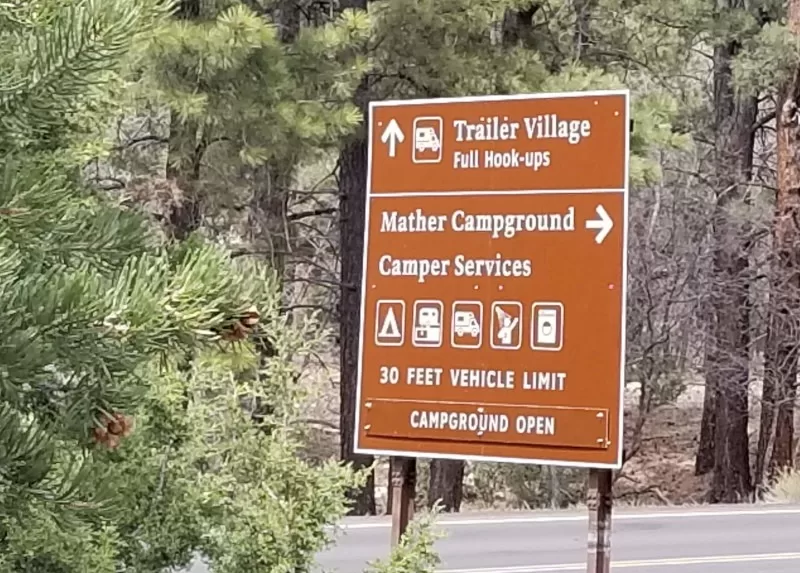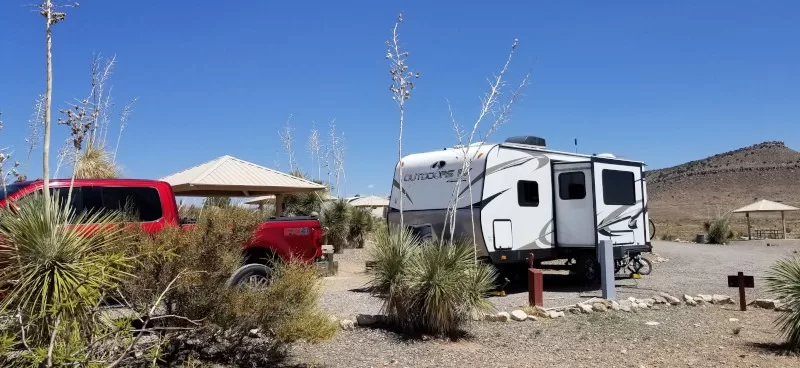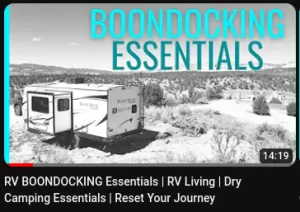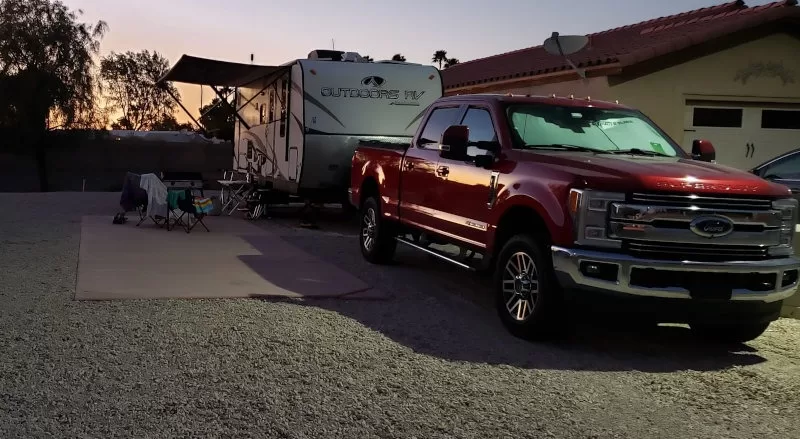Last Updated on 05/08/2024 by Glynn Willard
What Does Full Hookup Mean At An RV Park?
RV parks and campgrounds have full hookups if there are sewer hookups and electric hookups at your site.
One would imagine or expect that all RV parks and campgrounds have full hookups, but this is not the case.
Especially with state parks.
Many state parks designed their infrastructure before modern RVs became abundant.
Fortunately, most RV parks and campgrounds feature a dump station accessible to both coming and going traffic.
Generally speaking, full hookup does not entail cable television.
Does anyone even use cable TV anymore in their RV?
I’m using affiliate links and photos to make it easier for you to a) know what I’m talking about and b) help you make an informed decision. We also appreciate the small commission that does not cost you any extra.
What Are Partial Hookups At An RV Park?
Partial hookups in an RV park or campground can mean several different things.
For example:
- A site might have water hookups and sewer connections, but no electrical outlet.
You’ll have to use your RV’s power source (large battery bank or generator) to power your RV. - A site might have a power supply (shore power) for your electrical system, but no water hookups or sewer hookups.
Under this circumstance, you’ll need to rely on your fresh water tank as your water source and your gray water tank and black tank for your waste. - Some campsites have electrical hookups and a water supply, but no sewer hookups.
You’ll have to use your waste-holding tanks and dump them at the dump station when they’re full.
Be careful in this situation. It’s easy to fill your gray water tank quickly.
I suggest filling your freshwater tank rather than connecting city water since unlimited water does not mean unlimited waste tank capacity. - On occasion, paid campgrounds will have sites with no hookups. This is common in National Parks.
In this situation, you’re dry camping and will have to rely on a self-contained RV (unless you’re a tent camper).
It helps to know what hookups are available at a particular RV park before booking your site.
On a side note, make sure you use a water pressure regulator if you connect to city water.
This eliminates the potential for damaging your PEX lines.
What Is Dry Camping?
To better answer this question, refer to our article RV Boondocking For Beginners (Guide & Tips To Free Camping)
Essentially, you’re relying on all of your RV systems for:
- Power for your electrical system.
- Storage for your freshwater for drinking, cooking, and showering.
- Holding tanks for your wastewater and sewage.
- Storage for your trash.
As mentioned earlier, some RV campgrounds are exclusively dry camping.
But you’re also dry camping when you’re dispersed camping on BLM land, USFS land, a parking lot, and similar circumstances.
Difference Between RV Parks, An RV Resort, State Parks & Campgrounds?
RV park is a fairly general term encompassing most commercial RV campgrounds.
An RV resort incorporates luxury accommodations for its patrons. Many RV resorts include a gym, pool, bars, restaurants, and activities.
Resorts usually cater to high-end larger RVs.
State parks accommodate all types of RV travelers. You can usually choose between a tent site or an RV campsite.
Campgrounds is a general term that has tent sites and may or may not have RV sites.
National Park campgrounds have limited space and were built for smaller RVs. Some have to be booked a year in advance!
Full Hookup Site Etiquette
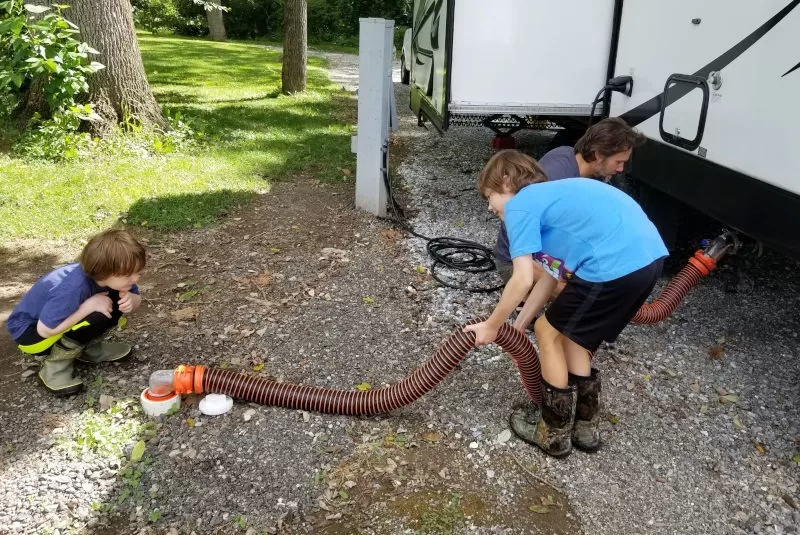
There are a few aspects to properly using a full hookup site.
- Most importantly, please do not use the city water connection (faucet) to clean your sewer hose.
Also, please do not attach your clean-out water hose to the city water line either. - If you make a mess with any over spill when dumping, please thoroughly rinse the area.
- If the RV park requires a sewer hose support system, make sure you have one on hand. I’ve not found any value in having one since we boondock most of the time.
- Let your tanks fill, periodically dumping the tanks as they fill. Dump the gray, then the black water tank.
- If you’re sandwiched in close to your neighbor and they’re eating a meal outside, wait until they finish to drain the waste tanks.
Let’s not ruin your neighbor’s camping experiences.
Honestly, a little common sense goes a long way at full hookup campsites.
Considerations When Using Full Hookup RV Sites
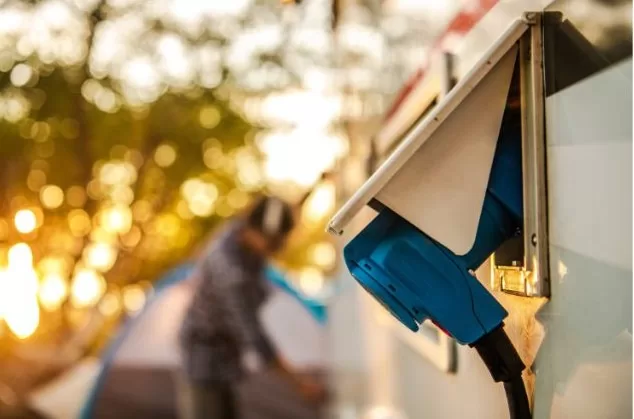
As mentioned above, a little common sense and thoughtfulness go a long way when managing your RV with a full hookup site.
It’s best practice to keep your waste tanks closed until partially full.
This way your black tank will not accumulate a “hardened mass of poo” at the bottom, resulting in clogs.
The same order of operation is in effect as it is in a dump station.
Dump your black tank first, followed by your gray tank.
Different Amp Services At RV Sites
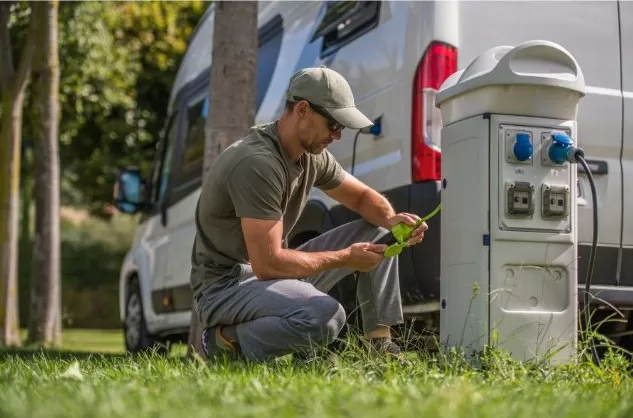
Older campgrounds may only have 15-amp or 30-amp service.
In this situation, if you have multiple air conditioners, you may only be able to run one at a time. Multiple may require 50-amp service.
If you have a larger RV and your electrical needs exceed a 30-amp service, do your best to book 50-amp sites.
Also, power cord adapters can make the difference between having power in your RV and only relying on your batteries.
These “shameless” affiliate links can help you decide which adapter is appropriate for your RV’s electric cord.
Pay close attention to the male and female ends, to avoid purchasing the wrong adapter.
For example, if your RV only has a 30-amp plug, purchase an adapter that converts the plug to both 15-amp and 50-amp.
We’ve encountered sites with a non-functioning 30-amp outlet.
Instead of moving, I just grab the handy adapter and plug it into the 50-amp. It will not hurt your rig.
Whenever you book a site, it will be clearly labeled which type of electric power is available at each site.
Solutions For Partial Hookups
Perhaps the biggest inconvenience is the lack of an on-site sewage system.
This means you either drive your rig to the park’s dump station or you have to use a portable RV waste holding tank.
It’s the best option over having to level your RV multiple times for the same site.
If there’s no electrical hookup, you’ll have to rely on your batteries or generator.
If you do use your generator, it’s a good idea not to use it late or early in the day.
Of course, if you rely on solar and batteries, you’ll have to avoid the shade.
This is generally difficult in most state parks and campgrounds.
Dump Station Etiquette
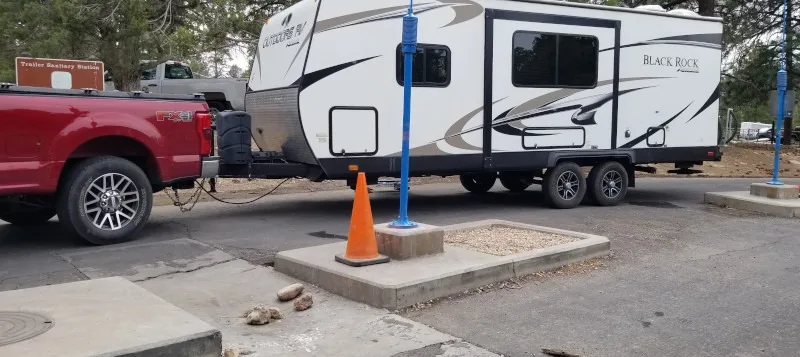
Ninety percent of the time, we find dump stations are left clean by the last user.
But not all users respect this etiquette, so be prepared to clean up after another user in addition to yourself.
- If you see a newbie struggling with their RV, kindly offer assistance. You might be or may have been that person who needed assistance.
- If there’s a line, be patient and use the time to chat with strangers.
It’s also a great time to review your map course, check email, safety check the rig, etc.
In other words, budget for things to do upon arrival at the dump station. - If there’s a crowd behind you, please hustle. This is not the appropriate time to do the extra-long tank flush.
- Make sure your sewer hose is securely attached at both ends before opening the valve to your black tank and gray tanks.
- Please only use the red-handled spigot to clean your hoses or flush your tanks. If it’s labeled as potable water, it’s NOT for cleaning your sewer hose!
- If you splash black water on the pavement, rinse it off with the hose supplied by the dump station.
- Never leave trash unless it goes into a dumpster. Please leave the dump station better than you found it.
- Again, never, never use the potable water source to clean out your hoses.
- When you finish, quickly police the area so it’s ready for other RV travelers.
Not Sure What You Need For Your RV?
Are Pull-Through Sites Full Hookup Sites?
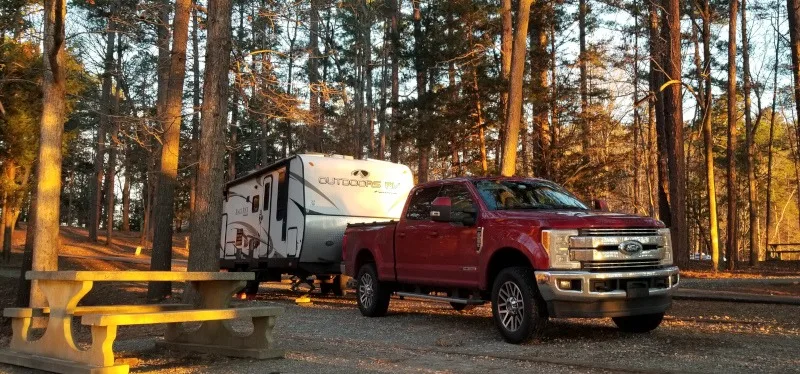
There’s no correlation between the two.
In other words, a pull-through site may or may not be a full hookup site.
Again, sites will be labeled for their size, hookups, if it has picnic tables, and whether it’s a pull-through or a back-in site.
Wrapping Up Full Hookup Sites
This guide applies to all types of RVs:
- Travel trailers
- Pop-up campers
- Fifth wheels
- Motorhomes
- Truck campers
- Campervans
Some campervans use cartridge toilets, but you can still dump these right at your site if it has full RV hookups.
If you have a partial hookup site without sewage and you have a cartridge toilet, it’s frowned upon to dump it in the campground’s toilets.
Walk it to the dump station.
Hopefully, this guide has given you a thorough understanding of full hook-ups, partial hook-ups, and dry camping in the great outdoors.
Now you’re well-equipped to rebuttal when your significant other tries to convince you that “full hookup” means something else!
Do you prefer an RV park with a full hookup site?
Meet the author.
We appreciate any help in bringing you great content. Donate or buy us a coffee on our Ko-Fi site. Or subscribe to our YouTube Channel.
Thank you so much for being here!


